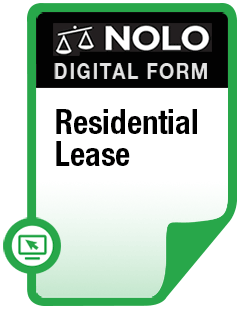Find out how a fire or other casualty loss to your rental property affects your taxes.
It seems that large portions of the country are constantly being affected by natural disasters such as floods, hurricanes, and tornadoes. Global warming may make extreme weather events more common than they have been in the past. Unfortunately, landlords are not always fully insured--or insured at all--against losses due to such events. Fortunately, the IRS can help because uninsured casualty losses to rental property are tax deductible.
What Is a Casualty?
A "casualty" is damage, destruction, or loss of property due to an event that is sudden, unexpected, or unusual. Deductible casualty losses can result from many different causes, including, but not limited to:
- earthquakes
- fires
- floods
- government-ordered demolition or relocation of a building that is unsafe to use because of a disaster
- landslides
- sonic booms
- storms, including hurricanes and tornadoes
- terrorist attacks
- vandalism, including vandalism to rental property by tenants, and
- volcanic eruptions.
One thing all the events in the list above have in common is that they are sudden—they happen quickly. Suddenness is the hallmark of a casualty loss. Thus, loss of property due to slow, progressive deterioration is not deductible as a casualty loss. For example, the steady weakening or deterioration of a building due to normal wind and weather conditions is not a deductible casualty loss.
The casualty need not be a presidentially declared disaster for a loss to rental business property to be deductible. This differs from casualty losses to personal property which are deductible during 2018-2025 only if due to presidentially declared disasters. For example, you can deduct property losses from a localized accidental fire in an apartment building. But personal property losses due a fire in your personal home are deductible only if the fire is declared a federal disaster--not likely for a small house fire.
Amount of Casualty Loss Deduction
How much you may deduct depends on whether the rental property involved was completely destroyed or partially destroyed and whether the loss was covered by insurance. If more than one item is damaged or destroyed, you must figure your deduction separately for each. This may include a rental building, land improvements under the building, landscaping, and other land improvements apart from the building. However, it is not necessary to separately deduct personal property items inside a rental property, such as stoves and refrigerators. (Learn more about tax deductions available to rental property owners, see Top Ten Tax Deductions for Landlords.)
Property a total loss
If your rental property is completely destroyed or stolen, your deduction is calculated as follows: Adjusted basis - Salvage value - Insurance proceeds = Deductible loss.
Your adjusted basis is the property's original cost, plus the value of any improvements, minus any deductions you took for regular or bonus depreciation or Section 179 expensing. You determine the basis for your building, land improvements, and landscaping separately. Adjusted basis should be easily found from a rental property's depreciation schedules and/or tax returns filed for the property.
Salvage value is the value of whatever remains after the property is destroyed. This usually won't amount to much. For example, if a rental house burns down completely, there may be some leftover bricks, building materials, personal property, and other items with some scrap value. Obviously, if a personal property item is stolen, there will be no salvage value at all.
Property a partial loss
If the property is only partly destroyed, your casualty loss deduction is the lesser of:
- the decrease in the property's fair market value due to the casualty, minus any salvage value and insurance proceeds, or
- its adjusted basis.
You must reduce both amounts by any insurance you receive or expect to receive. Unless you've owned the property for many years, the fair market value measure is usually less and is the one you must use. An appraisal by a competent appraiser can be used to determine the reduction in fair market value of partly damaged property, as well as salvage value. Alternatively, the cost of cleaning up or of making repairs after a casualty can be used as a measure of the decrease in fair market value if:
- the repairs are actually completed by the due date for your tax return
- the repairs are necessary to bring the property back to its condition before the casualty

- the amount spent for repairs is not excessive
- the repairs are for the damage only, and
- the value of the property after the repairs is not, due to the repairs, greater than its value before the casualty.
How Insurance Affects Tax Deductions for Casualty Losses
You must reduce your casualty loss deduction by the amount of any insurance proceeds or other reimbursement you actually receive or reasonably expect to receive. Unlike the case with personal casualty losses, you don't have to file an insurance claim to qualify for a rental business casualty loss deduction. In some cases you could be better off not filing a claim if it will result in substantial increases in your insurance premiums or cancellation of your policy.
If the insurance or other reimbursement turns out to be less than you expected, you can claim a loss the year you determine you'll receive no further reimbursement. Don't amend your original return for the prior year. If the reimbursement is larger than expected, you must include the amount in income for the year received to the extent a tax benefit was obtained from the excess loss claimed in the earlier year.
Other Payments That Affect Tax Deductions for Casualty Losses
You must also reduce your claimed loss by the amount of any of the following payments or services you receive or expect to receive:
- the cost of any repairs made by a tenant that you don't pay for
- payments to you by the tenant to cover the cost of repairs
- any part of a federal disaster loan that is forgiven
- court awards for damage or theft loss, minus any attorney fees or other expenses incurred to obtain the award, and
- the value of repairs, restoration, or cleanup services provided for free by a relief agency such as the Red Cross.
Disaster Areas and Casualty Losses
Casualty losses are generally deductible in the year the casualty occurs. However, if you suffer a deductible casualty loss in an area that is declared a federal disaster by the President, you may elect to deduct the loss for your taxes for the previous year. This will provide you with a quick tax refund since you'll get back part of the tax you paid for the prior year. If you have already filed your return for the prior year, you can claim a disaster loss against that year's income by filing an amended return. You must do so within six months after the regular due date for filing your original return for the disaster year.
You can determine if an area has been declared a disaster area by checking the Federal Emergency Management Administration (FEMA) website.
Deducting the Cost of Cleanup and Repairs
Talk to a Lawyer
Need a lawyer? Start here.
How it Works
- Briefly tell us about your case
- Provide your contact information
- Choose attorneys to contact you
- Briefly tell us about your case
- Provide your contact information
- Choose attorneys to contact you



